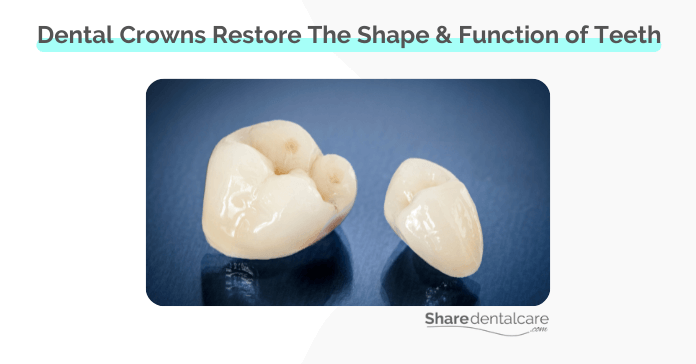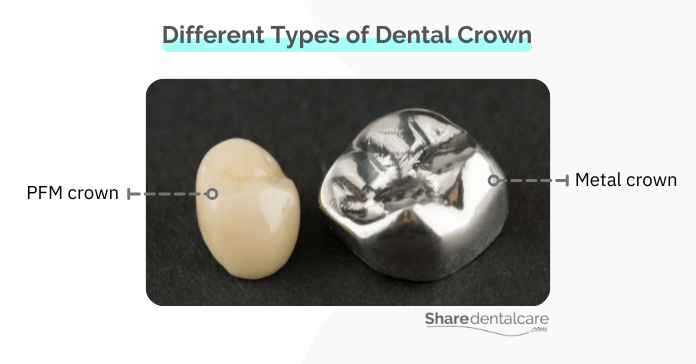Teeth are important for your general health. They help with chewing, biting, and speaking. But if a tooth breaks, it can cause problems for you in many different ways. For example, it can affect your bite and make it hard for you to chew some foods. If you are wondering how you might be able to repair your broken tooth, there are several options available. One option includes using a dental crown for your broken tooth to restore your smile, and chewing function and protect the tooth from further damage. In this blog post, we will look at the benefits of getting a dental crown for your broken tooth, as well as some of the alternatives.
Do You Need a Dental Crown?
A dental crown is a cap that is placed over the damaged tooth to protect it and strengthen it. Over time, your teeth can weaken and become damaged due to cavities or injuries. Broken teeth can cause chewing and speaking problems. They also can ruin your smile, which can have a negative impact on your confidence and the way that others see you. Therefore, you may need a dental crown for your broken tooth to restore its function, shape, size, strength, and appearance. Dentists usually recommend dental crowns in the following cases:
- Cracked, chipped, or broken teeth.
- Teeth with large dental fillings.
- After root canal treatment.
- Misshapen Teeth.

Benefits of Dental Crown for a Broken Tooth
There are a number of benefits to a dental crown for your broken tooth, including:
- Strengthen weak teeth such as teeth with root canal treatment.
- Protect the damaged tooth from further damage.
- Restore the function of the damaged tooth, which can help you eat and speak.
- Restore the appearance of your damaged tooth, which can improve your smile.
- Prevent pain or sensitivity if the broken tooth is vital.
Types of Dental Crowns for Weak or Broken Teeth
Dental crowns can be made from different materials, including:
- Metal crowns: crowns can be made from dental alloys such as gold, palladium, nickel, and chromium. Metal crowns are strong but not aesthetic.
- Porcelain-fused-to-metal (PFM): the dental crown consists of a metal base that fits over the tooth and is covered with porcelain. PFM crowns are durable, strong, and natural-looking.
- All-Ceramic crowns: this type is totally made from ceramic material and has no metal. All-ceramic crowns are suitable for people with allergies to metal. However, they are more expensive than metal and PFM crowns.
- Acrylic or Composite resin crowns: this type is used as a temporary crown. Acrylic crowns can break easily. Learn more about temporary cap for a broken tooth.

Alternatives to Dental Crown for a Broken Tooth
A dental crown is the most common option for treating a broken tooth. However, there are some alternatives that can be considered to repair a broken tooth, including:
- Teeth bonding: your dentist may use composite material to repair the broken tooth. Teeth bonding is an affordable option and can be done in one visit. However, it is not as durable or long-lasting as crowns.
- Dental Onlays: they are dental restorations that fit over your broken tooth’s chewing surface to protect, restore and strengthen it. They can be made from alloys or ceramics. Onlays are more conservative than dental crowns but they are not suitable for anterior teeth.
- Dental veneers: they are thin shells that cover the front side of teeth to repair some problems such as broken, chipped teeth, teeth discoloration, and small gaps between teeth. Dental veneers can be made from porcelain or composite. However, they are not suitable for badly broken teeth and are more fragile than dental crowns. They are also used only for anterior teeth and premolars.
- Tooth Extraction: it is a treatment option for severely broken teeth that are no longer viable to repair. Your dentist may recommend a dental bridge or implant for replacing the missing tooth. Learn more about the different bridge types in dentistry.
The choice between the dental crown or other treatment options depends on several factors such as the size of the fracture, the location of the broken tooth, the cost, and the patient’s preference. For example, if you have a severely damaged tooth that can’t be restored with crowns, your dentist may recommend tooth extraction and dental implants.
Dental Crown on Broken Tooth – Conclusion
If you have a broken tooth, a dental crown is a good treatment option to repair it. The dental crown can restore the function, shape, size, strength, and appearance of your broken tooth. But, crowns are not the only treatment option for broken teeth. You can also consider teeth bonding, Onlays, veneers, and tooth extraction. The choice between these options depends on several factors, such as the severity of the damage and the location of the tooth. So, consult your dentist to see if a dental crown is a good option for your broken tooth.